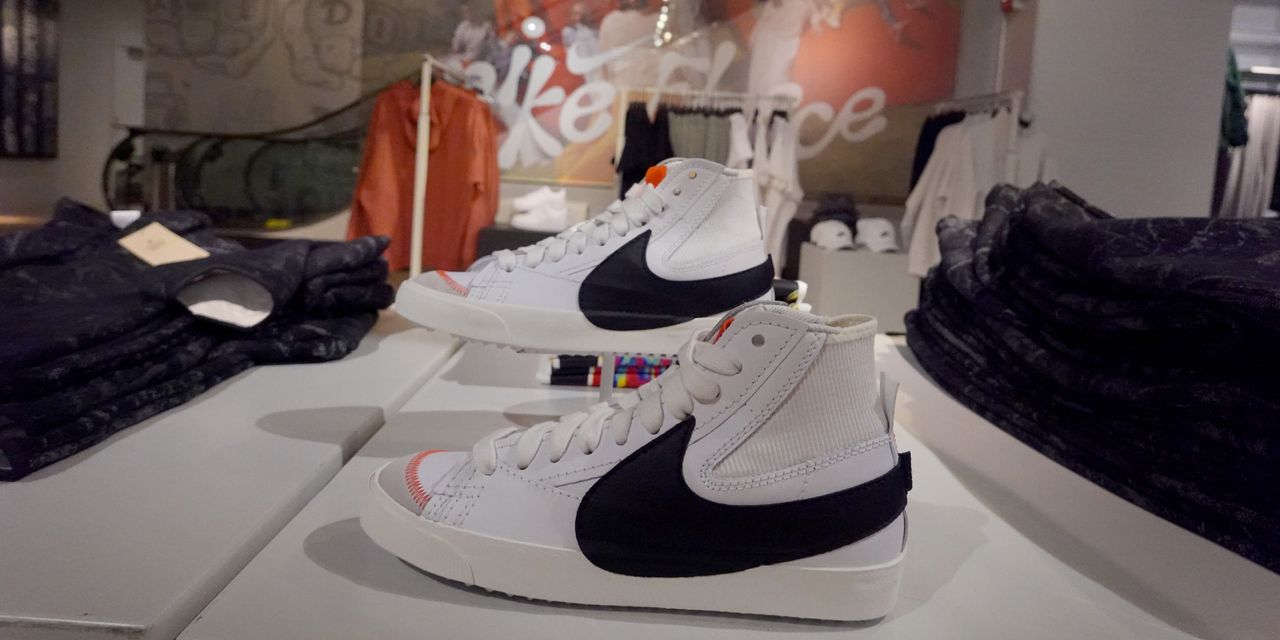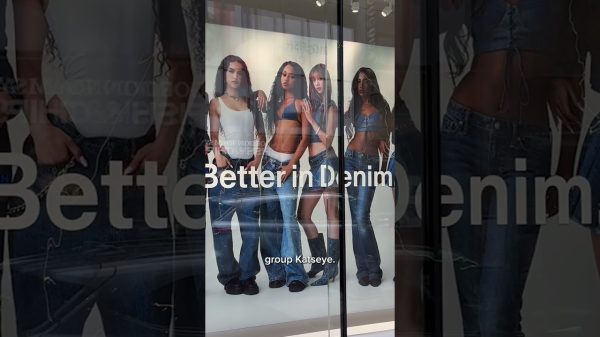Nike
beat revenue expectations but the stock fell in after-hours trading amid concerns that North American consumers are poised to slow spending in the coming months.
The athletic shoe company posted earnings per share and issued first-quarter guidance that fell short of expectations, spooking investors.
Nike’s (ticker: NKE) revenue of $12.8 billion for its fiscal fourth quarter was ahead of estimates for $12.58 billion. But it earned 66 cents a share, missing predictions for 68 cents a share. Nike’s gross margins also took a hit this quarter, down 1.4 percentage points to 43.6%, thanks to higher input costs and ongoing discounting activity designed to get rid of excess inventory.
The company also returned about $1.9 billion to shareholders in the fourth quarter in dividends and share repurchases.
First-quarter revenue will either be flat or grow by low-single digit percentage points, the company said. That’s less than the Street’s estimates for 6% growth.
For fiscal 2024, Nike is projecting revenue will grow by mid-single digit percentages. That’s in line with current analyst estimates projecting revenue would grow by about 6%. Gross margins will expand between1.4 to 1.6 percentage points over the course of the year, as the company sees fewer markdowns.
“We enter the new year with clear advantages: Strong consumer momentum, a robust product innovation pipeline, healthy inventory, and a normalized flow of supply,” said Matthew Friend, Nike chief financial officer, on a call with investors. “That said, we are closely monitoring the macro environment, consumer behavior and retail trends.”
Nike stock fell 4.6% to $108.20 in after-hours trading. The stock has trailed the broader market this year, off 3.1% while the S&P 500 has gained 14%.
Wall Street had muted expectations heading into
Nike’s
earnings report. Research firms have been lowering their price target estimates over the past couple of weeks. The average target price for Nike stock is $132.60, according to FactSet, down from $136.43 at the end of May.
Analysts were fretting over how slowing sales in North America impacted the company’s fiscal fourth-quarter results—but sales in the region came in at $5.35 billion, slightly ahead of estimates for $5.33 billion.
The question now becomes whether North American consumers will remain resilient in North America in the following fiscal year, or if consumers are headed to a slowdown ahead. Several of Nike’s wholesale partners, including
Foot Locker
(FL), cut fiscal-year guidance during their most recent earnings calls, warning that demand for sportswear was waning.
Recently, Nike has rekindled partnerships with retailers it had previously stopped selling to, including
Macy’s
(M) and DSW. On Thursday, management said this wasn’t a major shift away from its direct-to-consumer strategy, but rather a “continued evolution” of this strategy.
It wasn’t all doom and gloom in Thursday’s report. Inventory levels improved slightly this quarter, coming in flat compared with the same period last year, better than the third quarter’s 16% increase. Similarly, sales in Greater China jumped by 16%, better than analysts were forecasting. Management said they were seeing strong growth among Chinese Gen Z consumers as the economy reopened.
“We are confident in the strength of our consumer connections and competent in Nikes ability to drive sustainable long term growth in China,” Friend, the CFO, said.
Write to Sabrina Escobar at [email protected]
Read the full article here







